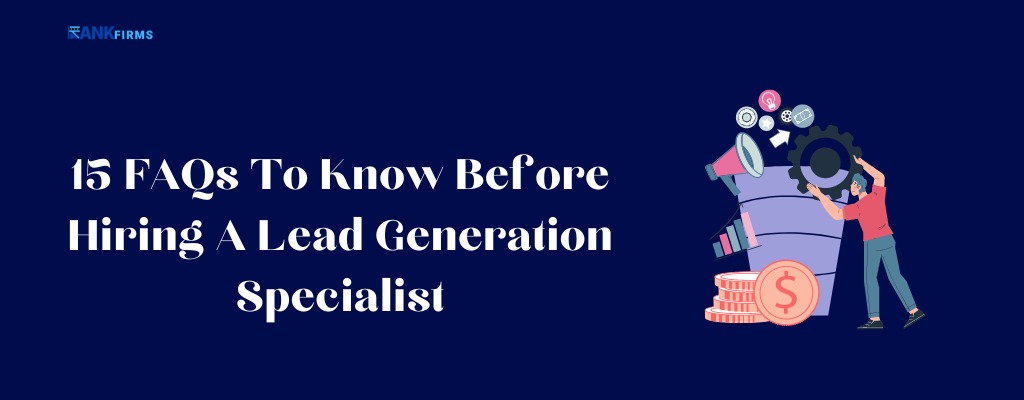Google algorithms are complex systems that retrieve data from its search index and deliver the best possible results for a query. These algorithms use a combination of rules, signals, and machine learning models to rank websites based on relevance, quality, and user experience.
Key examples include:
- Panda – Focuses on content quality, penalizing thin or duplicate content.
- Penguin – Targets link schemes and manipulative backlink strategies.
- Hummingbird – Enhances the understanding of natural language and search intent.
- Core Web Vitals – Prioritizes website performance, including load speed, interactivity, and visual stability.
Google updates these algorithms periodically to refine the search experience, ensure fairness, and align with evolving user behavior.
Why Do You Need To Know About Algorithms?
- Enhance User Experience: Algorithms ensure users find accurate, high-quality, and relevant information quickly.
- Boost Visibility: Websites optimized for these algorithms rank higher, increasing organic traffic and brand exposure.
- Combat Manipulative Tactics: They discourage black-hat SEO practices, ensuring a level playing field for content creators.
- Align with Search Trends: Updates reflect changing user behavior, such as the rise of mobile searches, voice queries, and local intent.
For businesses, staying aligned with these algorithms is essential—not just for rankings but for gaining leads. A site optimized for Google’s current expectations attracts more relevant visitors, improving conversion opportunities.
How to Approach Ranking Changes After a Google Update
Google advises site owners to adopt a systematic approach when addressing ranking fluctuations caused by updates. Here’s how:
|
Recent Google Updates: Key Insights
Recent changes in Google’s algorithms emphasize aligning website optimization with user behavior and improving the lead-to-sale journey. Businesses, especially IT services companies and software development firms, must adapt their strategies to ensure sustained visibility and increased lead generation.
1. Mapping the Lead-to-Sale Journey
To improve conversions and make the most of Google’s algorithm updates, businesses need to refine how they guide users from lead generation to final sales. Here’s how:
Chart the Path from Lead to Sale
Outline the customer journey, mapping out the critical steps from initial engagement to final purchase. Identifying these key conversion milestones allows businesses to create a seamless pathway for potential customers.
Select Conversion Actions for Effective Bidding Strategies
To enhance performance, focus on well-defined conversion actions tailored to your goals:
Lead-Generation-Specific Goals:
Define clear objectives, such as contact form completions or requests for proposals (RFPs), to track lead generation efforts.
Volume of Conversions:
Prioritize actions that generate a high number of qualified leads, ensuring steady pipeline growth.
Timeliness of Data:
Use the latest data insights to adapt bidding strategies in real-time, keeping pace with changing user behavior.
Conversion Timeframes:
for longer decision cycles typical in B2B industries by considering the delay between the initial lead and final conversion.
These adjustments are essential for businesses aiming to maximize ROI while maintaining lead quality.
Recent Industry-Specific Statistics
Recent Google updates have had varying impacts across industries, reflecting their unique digital landscapes:
E-commerce:
Experienced a notable -22.1% shift in top citations, indicating a need to refine product pages and backlink strategies to retain rankings.
Education:
Observed a moderate -7.3% adjustment, highlighting the growing importance of authoritative content and resource hubs.
Healthcare:
Maintained relative stability with only a -1.5% shift, suggesting minimal disruption but a continued focus on trustworthy content.
B2B Tech (including IT services and ):
Recorded a minor -0.4% change, emphasizing the sector’s resilience to fluctuations while underscoring the need for continuous website improvements.
2. Establish a Robust Measurement Framework
To succeed in optimizing campaigns and driving lead generation, businesses need to lay a solid foundation for measurement. This involves harnessing first-party data effectively and streamlining its management.
Gather and Integrate First-Party Data
First-party data—information collected directly from your audience, such as website interactions, form submissions, or app usage—is invaluable for understanding user behavior. By connecting this data across platforms, businesses can create detailed customer profiles, enabling personalized experiences that improve engagement and conversion rates.
For digital marketing companies, leveraging first-party data can reveal insights into what potential clients are searching for, such as specific solutions or services, allowing tailored marketing strategies.
Simplify Data Management with Google Ads Data Manager
Google Ads Data Manager helps consolidate multiple data sources into one centralized system, reducing complexity and improving efficiency. By organizing data from ad campaigns, analytics, and CRM systems in a unified dashboard, businesses can:
- Gain a holistic view of performance.
- Identify trends and gaps in lead conversion.
- Make data-driven decisions for better campaign optimization.
For online advertising companies, this means creating targeted ad campaigns based on accurate insights, ensuring higher ROI and more qualified leads.
3. Optimize and Scale Your Lead Generation Efforts
To achieve sustainable growth and maximize campaign performance, businesses should focus on optimizing their strategies and expanding their reach. Here’s how:
Use Content Suitability Settings to Fine-Tune Ad Placements
Content suitability settings allow businesses to control where their ads appear, ensuring they align with the brand’s image and values. By filtering out content categories that don’t resonate with the target audience or that may harm the brand’s reputation, companies can maintain trust while improving the effectiveness of their campaigns.
For outsourcing software development companies, this ensures ads appear on professional and relevant platforms, appealing to decision-makers in the B2B space.
Adopt Advanced Lead Verification Techniques
Adding more robust lead verification methods helps ensure the quality of the leads generated. Tools like CAPTCHA, multi-step forms, or email and phone validation can help filter out spam and unqualified leads, saving time and resources. Verified leads mean better chances of converting inquiries into actual sales opportunities, especially for B2B-focused companies.
Align Budgets and Targets with Your Goals
Revisit your performance goals and allocate your advertising budget strategically to meet those objectives. Whether the aim is to increase lead volume, improve conversion rates, or target specific buyer personas, aligning budget distribution with key performance indicators (KPIs) ensures that resources are used efficiently to achieve measurable results.
For instance, software development companies seeking enterprise-level clients can focus their budget on high-intent keywords or platforms catering to C-suite executives and IT decision-makers.
Recent data highlights significant shifts in SERP behaviour following the update, with changes varying across ranking tiers. These trends underscore the importance of understanding how volatility impacts visibility and lead-generation efforts:
Top 10 Positions:
The most coveted spots in search results have seen a 10.6% increase in volatility, indicating heightened competition among high-ranking pages. Websites occupying these positions are more likely to experience fluctuations as Google refines its ranking factors.
Positions 11-20:
These mid-tier rankings have observed a 5.9% decline in volatility, suggesting a temporary stabilization in this range. However, businesses in these positions must focus on optimization to push their pages into the top 10.
Positions 21-30:
Lower-tier rankings have experienced the most significant shift, with a 23.3% increase in volatility. This demonstrates a dynamic reshuffling of content, providing opportunities for newer or updated pages to climb the ranks.
Also Read: Unveiling User Habits: A Survey-Driven Look at App Usage Statistics in 2024
4. Leverage AI-Powered Campaigns for Enhanced Performance
Integrating AI into your marketing strategies can unlock new opportunities for businesses to connect with their audience, optimize campaigns, and drive better results. Here’s how:
Adopt Value-Based Bidding Strategies
AI-powered tools enable businesses to implement value-based bidding, which prioritizes conversions that bring the most value rather than focusing solely on volume. By analyzing historical performance data and real-time trends, AI can dynamically adjust bids to maximize ROI. This approach helps ensure that resources are allocated effectively toward high-value leads.
Adapt to Changing Consumer Search Behavior
Consumer search patterns evolve rapidly, influenced by factors such as new technologies, seasonal trends, and societal shifts. AI tools can analyze these changes in real time, identifying emerging keywords, preferences, and behaviors. By keeping pace with these insights, businesses can create content and ads that remain relevant and engaging.
Generate Leads Across Multiple Search Channels
AI-powered campaigns enable seamless integration across various search channels, ensuring businesses capture leads wherever their audience is active. By optimizing performance on platforms like Google Search, Display, and YouTube, businesses can extend their reach and drive consistent lead generation across all touchpoints.
Create and Capture New Demand
AI-driven analytics can uncover untapped market segments and emerging opportunities. By understanding new customer needs and preferences, businesses can craft tailored campaigns that resonate with these audiences, fostering demand where it didn’t previously exist.
Build a Stronger Base of Loyal Customers
Through personalized recommendations and tailored customer experiences, AI can help nurture existing relationships and encourage repeat business. Predictive models analyze user behavior to anticipate needs, enabling businesses to deliver relevant offers and messages that build trust and loyalty over time.
Google’s Latest December Update: Key Insights
1. Multiple Ranking Systems
Google has further refined its approach to ranking websites by employing multiple ranking systems. This means that instead of relying on a single algorithm, Google uses a variety of systems, each designed to evaluate different aspects of a webpage. These systems are continually evolving to improve the accuracy of search results.
Multiple ranking systems that do different things:
This refers to the fact that Google now uses several algorithms that specialize in different functions—whether it’s understanding content quality, evaluating user experience, or interpreting technical factors like load speed or mobile compatibility. Each system contributes to determining where a webpage ranks in search results.
Always looking at ways to improve these systems to show better results:
Google is continuously working to improve these ranking systems to provide users with more relevant and higher-quality results. These improvements may involve refining how content is analyzed, how search intent is understood, or how rankings are affected by factors like website engagement or site security. This constant evolution means that businesses must stay agile in adapting to algorithm changes.
Also Read: What is Lead Generation in Digital Marketing?
Advice for Websites
Google’s December update emphasizes the importance of creating high-quality, user-centric content that meets the needs of searchers. The focus is on improving the overall user experience and prioritizing helpful, reliable content.
Focus on Creating Helpful, Reliable, and People-First Content:
Google now stresses that content should be crafted with the user in mind, addressing their needs, providing solutions, and presenting information clearly and accurately. Content should not just be optimized for search engines but should genuinely serve the audience’s interests.
Understand What is People-First Content:
People-first content means creating materials that prioritize human readers over search engine optimization tactics. This type of content answers questions, provides value, and helps users solve problems. It is well-researched, fact-based, and easy to understand, offering real benefits to the audience rather than focusing solely on attracting traffic.
For advertising agencies, producing people-first content involves understanding what potential customers are truly looking for and ensuring that all content (blogs, landing pages, case studies) is relevant, authoritative, and user-friendly.
Conclusion:
By aligning your website with the latest Google updates, you’ll not only improve your rankings but also create an environment where users are more likely to convert into leads. If your website is optimized for search engines and designed to offer value to visitors, the result will be increased traffic, better lead quality, and more conversions.






